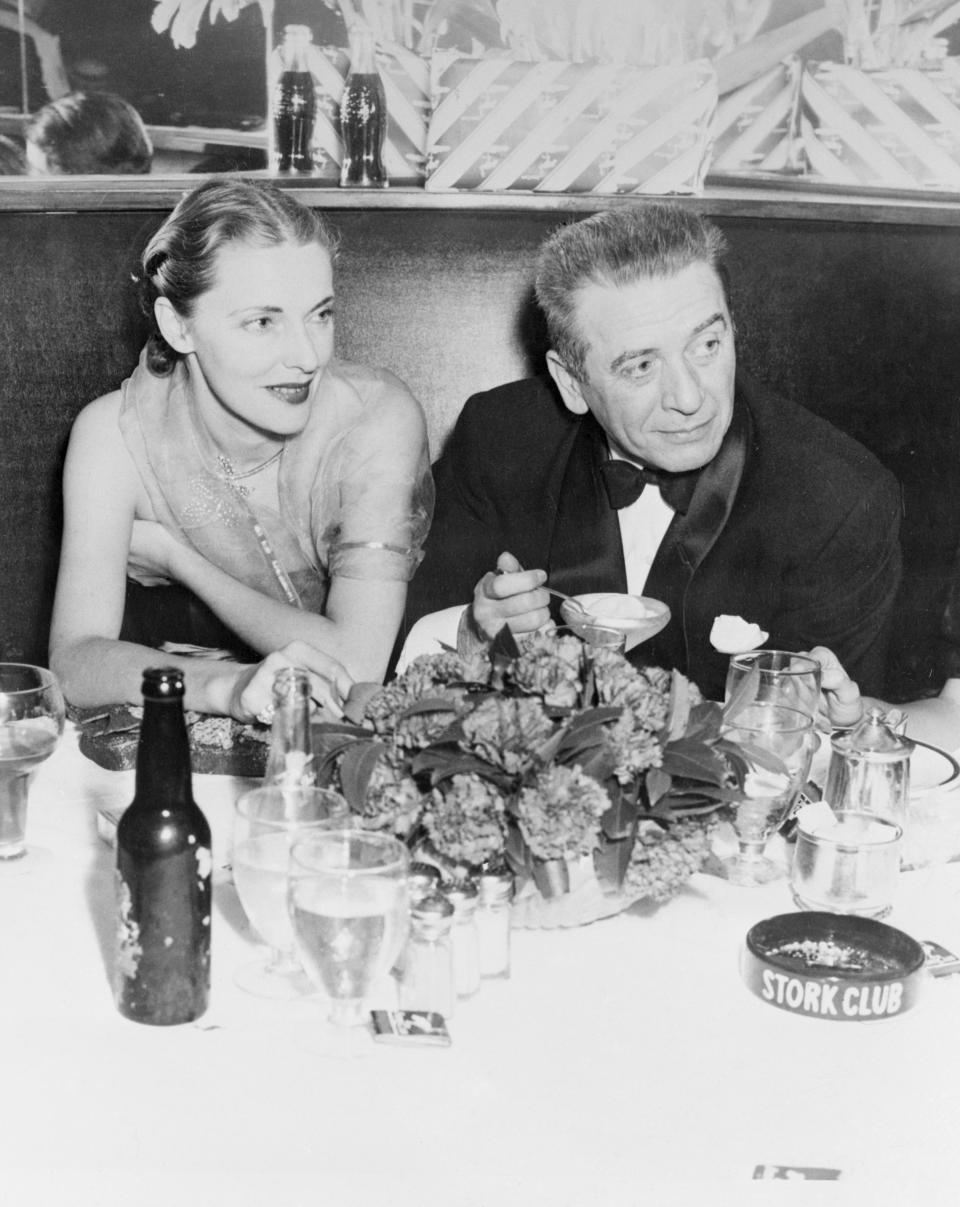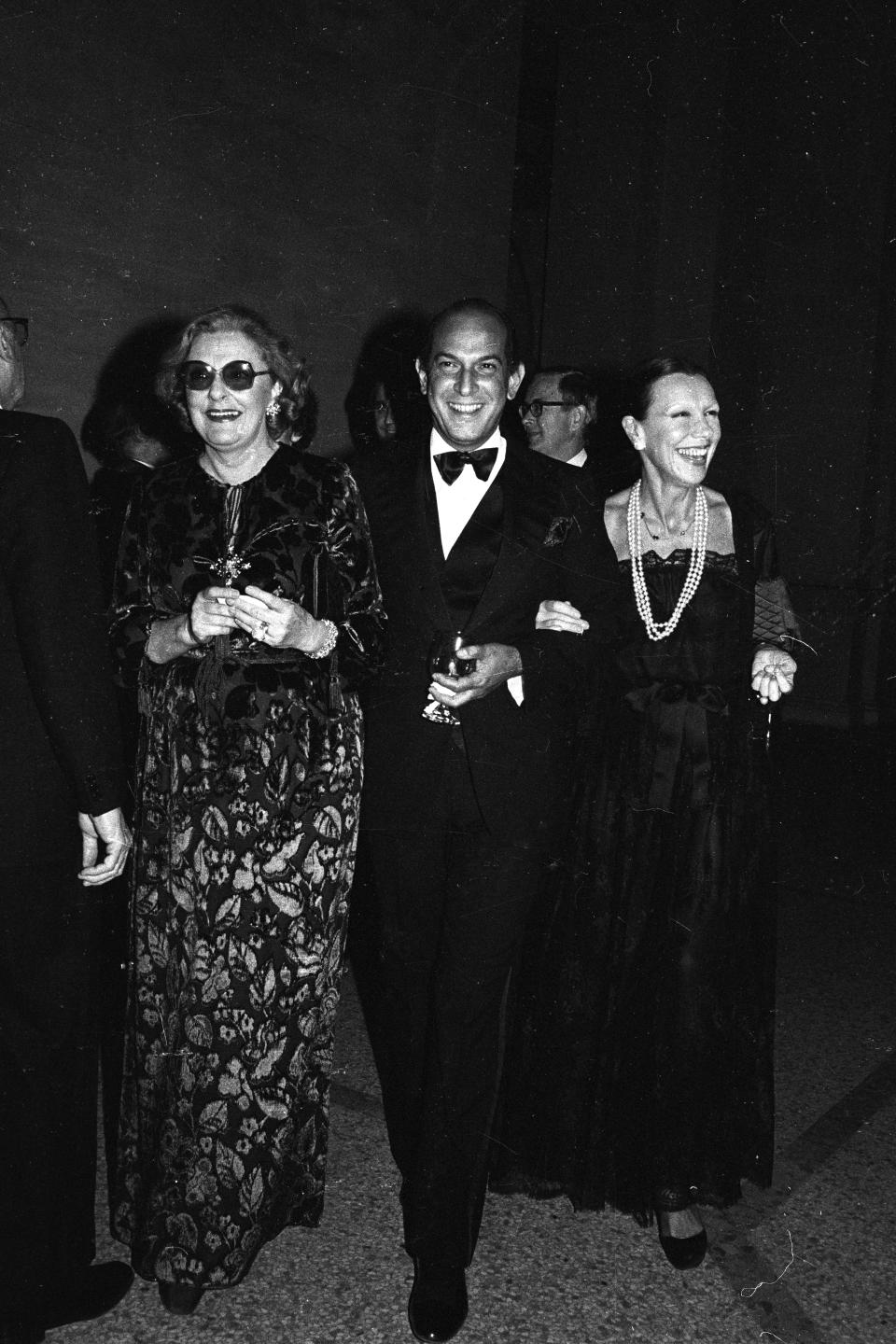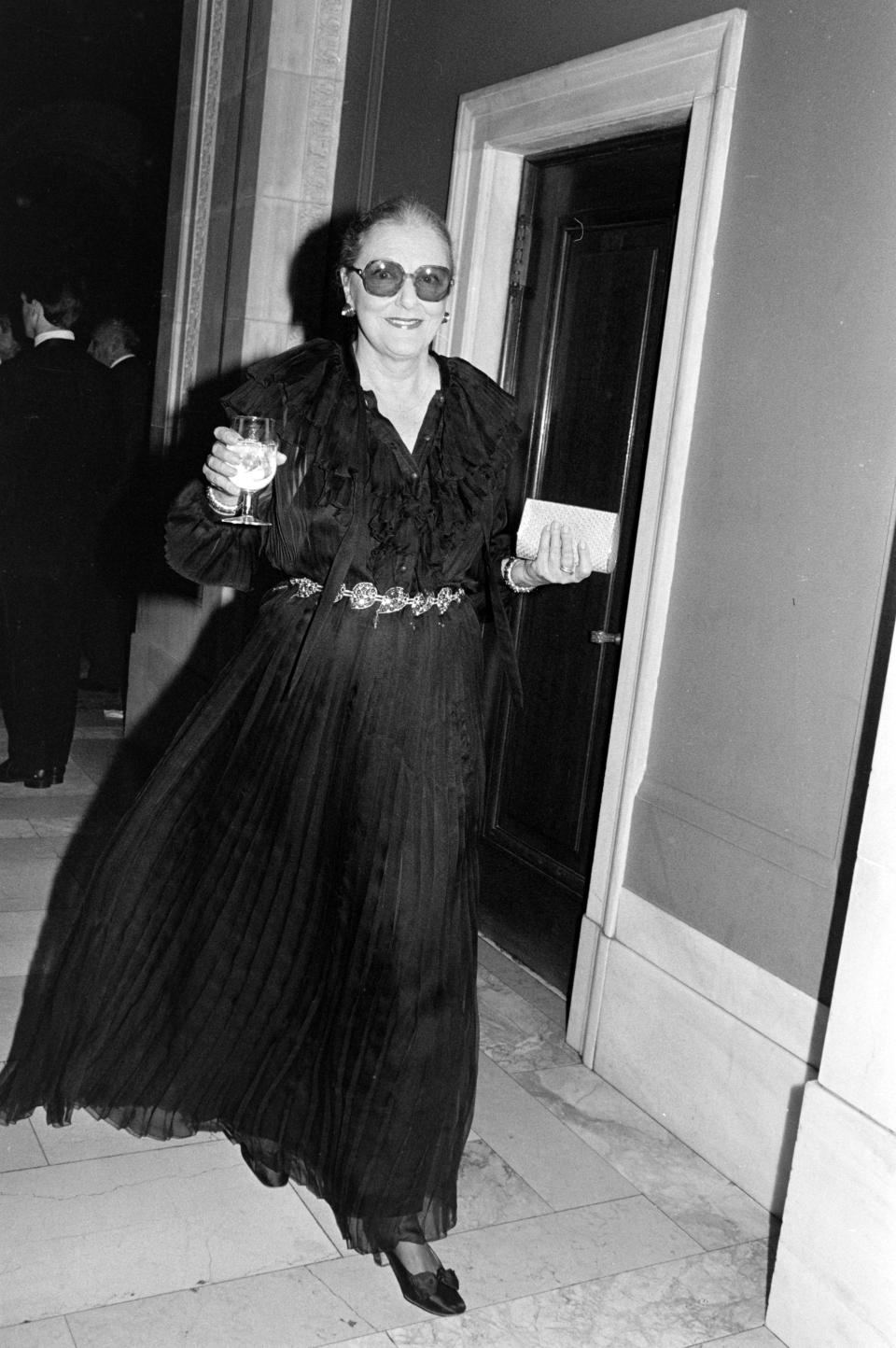Who Was Slim Keith? Learn More About Truman Capote’s Swan Known for Her Charming Wit

If you purchase an independently reviewed product or service through a link on our website, WWD may receive an affiliate commission.
Nancy “Slim” Keith, Lady Keith of Castleacre, was a mover and a shaker, but if you ask her what her secret to her success was, she’d simply tell you, “I was just wonderful being wonderful.” A California native, Keith’s influence on Hollywood created lasting strokes of genius through her first of many marriages to director and producer Howard Hawks. Despite not having the storied pedigrees of her fellow Swans, Keith had two other things: grit and ambition.
More from WWD
As celebrated actress Diane Lane steps into the role of Slim Keith for “Feud: Capote vs. the Swans” that’s streaming now on Hulu, she fills the show with cutting observations and a shrewd sense of self, working alongside actresses like Naomi Watts as Babe Paley and Chlo? Sevigny as C. Z. Guest.
Tall, blonde, and admired for her athletic ability in addition to her keen observer’s eye, Keith was known during the ‘50s and ‘60s as a key member of the American jet set.
Early Life
Keith was born Mary Raye Gross on July 15, 1917 in Salinas, California. Renamed “Nancy” after birth by her mother, even that second name wouldn’t have too much use for long, as she’d later be known simply as “Slim.”
Despite her father’s success in business, specializing in canneries in Monterey, Keith did not grow up with the same privileges of many of her fellow swans. In fact, her parents’ marriage was deeply dysfunctional. Her father viewed Catholics and Democrats with equal disdain while her mother presented as an ideal homemaker, much to her father’s ire. When Keith was eleven, she faced her first significant loss that had rippling effects across her life: In the winter of 1928, her younger brother Buddy was the victim of a horrific accident, causing his shirt to catch fire. Keith’s mother put the fire out by wrapping the boy in a rug, but sadly he would die shortly after due to his wounds. Her father openly blamed her mother for the loss of his only son and the two would begin the process of divorce.

Shortly after the ink dried on the divorce papers, Keith’s father would insist she and her older sister Theodora pick a parent. Despite his offers of a horse, car, and access to money her father looked to withhold from her mother, Keith decided to live with her mother, effectively ending her relationship with her father.
Keith attended a Dominican convent school for her education. Her older sister took it as an opportunity to avoid Keith, eventually displaying hostile behavior and spreading malicious gossip about Keith’s bed-wetting issues to the student body. Following her sister’s graduation, Keith never spoke to her sister again.
Hollywood Socialite
During her senior year of school, Keith felt a calling for something more, and after some convincing discussions with her mother, Keith was allowed to take a hiatus from school. After a doctor’s note provided the permission for a period of recuperation, Keith decided to drive across the Mojave Desert to Death Valley to be a guest at the popular Furnace Creek Inn. A yellow Packard roadster she called the Flying Omelet would take her there.
Despite the Furnace Creek Inn catering to an older clientele, Keith managed to have fun. It was during this stay that Keith met the actor William Powell, known for his role in “The Thin Man.” Powell took a liking to the blonde beauty, who eventually was introduced by Powell to publishing magnate William Randolph Hearst and his mistress, actress Marion Davies. Keith parlayed these new connections into a successful modeling career, appearing on the cover of Harper’s Bazaar at 22 years old. Keith would later reflect back on this time in her life, saying, ”Somewhere else there was a Depression going on. In Hollywood, I was having the time of my life. I didn’t want to be an actress. In fact, I had no career aspirations at all. I had a mother who supported me, doted on me, and spoiled me. For me, it was enough to be in Hollywood — it was where any girl who was operating on a mixture of instinct, charm, and good looks would have chosen to be in 1938.”
Clark Gable and Ernest Hemingway were two of many suitors she courted in Hollywood, but in 1938, Keith met the film director Howard Hawks. Despite already being married to actress Norma Shearer’s sister, Hawks was smitten and determined to do everything in his power to marry Keith. Three years later, Hawks and Keith married, with actor Gary Cooper giving her away.
Keith would write of Hawks later that “He was not only handsome, charming and successful, he was exactly the package that I wanted. The career, the house, the four cars, the yacht — this was the life for me.” In turn, Hawks liked that Keith, despite the looks, had no interest in pursuing a professional acting career.
While not bound for the silver screen, Keith proved invaluable in the industry, encouraging her husband to cast then unknown model Lauren Bacall alongside Humphrey Bogart in “To Have and Have Not.” Hawks modeled Bacall’s character after Keith, in her mannerisms, dress, and even using her nickname for the character’s. (According to legend, Powell first bestowed the nickname Slim onto Keith after seeing her stretched out by a pool.) In addition to Bacall, Keith is credited with discovering Joanne Dru and Ella Raines, two other leggy beauties who resembled her. But as her influence in Hollywood and style grew, her marriage was quickly crumbling. Despite the birth of a daughter, Kitty Hawks, in 1946, Howard Hawks could not kick his habit of infidelity, notoriously uninterested in his daughter’s life and soon after Kitty’s birth, Keith went away to Cuba with Ernest Hemingway. Keith would later claim that in Cuba, she met the love of her life.

The Swan
Leland Hayward was a powerful Hollywood and Broadway agent, married at one point to actress Margaret Sullavan (their daughter, model and socialite Brooke, would publish “Haywire” in 1977, an explosive memoir discussing her mother Margaret’s mental health struggles, her sister’s suicide, and her own personal issues). On his roster, Hayward counted famous actors and creatives such as Fred Astaire, James Stewart, Ernest Hemingway, Boris Karloff, Judy Garland, Ginger Rogers, Henry Fonda, and William Wyler. As Hayward was known for his skills as an agent, Keith was recognized for her all-American style, which she merely attributed to genetics and luck, saying, “I have a tall, skinny frame that clothes look well on. Seriously, just say that I’m a great believer in simplicity in clothes.’’

Hayward and Keith married in 1949 at the Paley’s Long Island home before moving to New York, where they would remain throughout their marriage. Reflecting on their time together, Keith firmly believed Hayward was the love of her life. ”When I lost Leland, I lost the best part of my life.” He would leave her for Pamela Churchill, and Slim Keith would remarry for a final time to a banker, Kenneth Keith.

During her time in New York, Slim Keith became attached to a group dubbed by Truman Capote as “swans.” Women in this circle included Guest, Paley, Lee Radziwill, and Ann Woodward. Considering him a close friend, the swans would confide in Capote and unbeknownst to them, he was sourcing material to use at a future opportunity. Capote would say Keith reminded him of his mother, a woman who abandoned him for her own New York ambitions.
In 1975, the publication of “La C?te Basque, 1965” in Esquire would reveal the sordid details of Capote’s swans’ lives, taking down each in their own way. The excerpt of his book, “Answered Prayers,” explored the dysfunctional lives of his swans behind the veil of “inspired characters” and effectively ended Capote’s relationship to high society and the women. Slim Keith would immediately cut ties with the author. The character allegedly based on her, Lady Ina Coolbirth, is as unflattering as they come.

Following the end of her third marriage, Slim Keith wrote “I was married to each for about 10 years. I guess that’s about all I can hack.” She devoted time to travel before her death in 1990.
“God blessed me with a happy spirit and many other gifts. What I was not blessed with, I went out and got. Sometimes the price was too high, but I’ve never been much of a bargain hunter.”

Why Trust WWD
Since 1910, WWD — often referred to as “the fashion bible” — has been the leading industry voice of authority for senior executives in the global women’s and men’s fashion, retail and beauty communities, while also informing the consumer media that cover the market. Today, WWD’s breaking news and trend coverage continues to be a trustworthy resource for both fashion insiders and consumers alike. Our shopping editors continue to uphold WWD’s editorial standards and values with quality, expert-backed product selections. Learn more about us here.
Meet the Author
Fernando Snellings is a freelance contributing writer for Women’s Wear Daily and Footwear News.
Sign up for WWD's Newsletter. For the latest news, follow us on Twitter, Facebook, and Instagram.